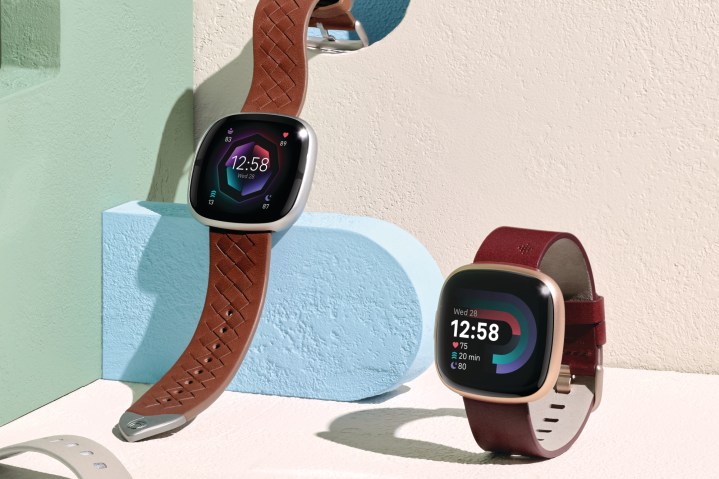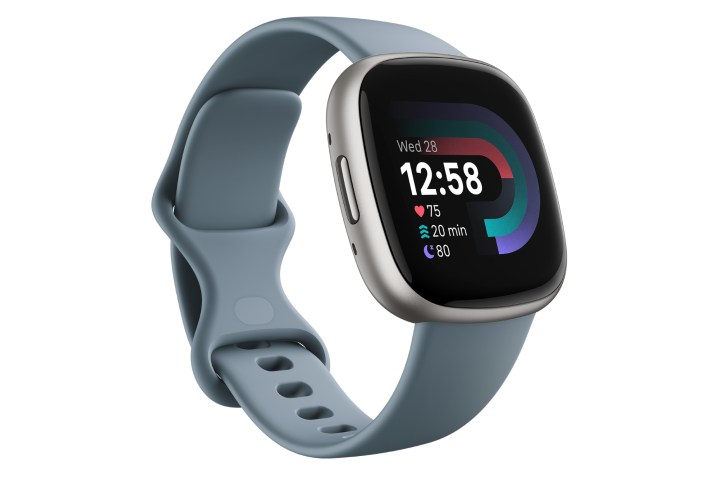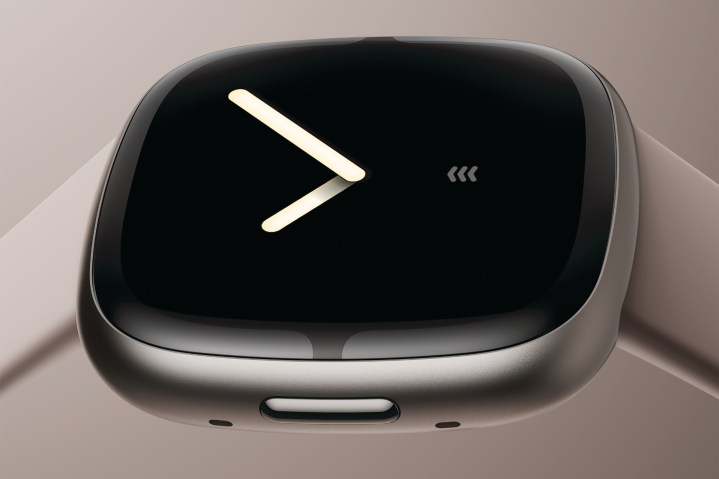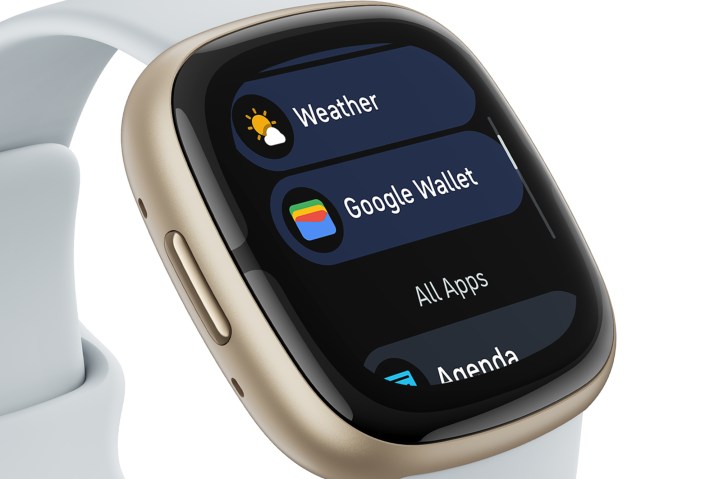Fitbit is back with two new health-focused smartwatches, the Fitbit Versa 4 and the Fitbit Sense 2. Both watches are well-designed tools with health-tracking features, superseding the Fitbit Versa 3 and the original Sense.
While Google purchased Fitbit in the interim between both releases, these still use the company’s proprietary Fitbit OS in lieu of Wear OS 3. For that, you’ll need to get the Pixel Watch, the Samsung Galaxy Watch 5, or the Montblanc Summit 3. Instead, these releases from Fitbit iterate and refine what made their previous models so good. The good batteries and handsome designs remain, accompanied by changes to heft and feel and minor software tweaks here and there. With so much overlap, there’s a question to be raised about which of the two is the better fit for your wrist and wallet, so which is better for you? We found out.
Specs
| Fitbit Versa 4 | Fitbit Sense 2 | |
| Display size | 1.58 inches | 1.58 inches |
| Body size | 40 x 41 x 11mm | 41 x 41 x 11mm |
| Resolution |
336 x 336 pixels
|
336 x 336 pixels |
| Touchscreen | 1.58-inch AMOLED display | 1.58-inch AMOLED display |
| Storage | 4GB | 4GB |
| Wireless interface | Bluetooth 5.0, Wi-Fi 802.11 b/g/n, NFC | Bluetooth 5.0, Wi-Fi 802.11 b/g/n, NFC |
| EDA sensor | No | Yes |
| ECG sensor | No | Yes |
| Gyroscope | Yes | Yes |
| Ambient light sensor | Yes | Yes |
| Heart rate sensor | Yes | Yes |
| Barometer | Yes | Yes |
| GPS | Yes | Yes |
| Compass | Yes | Yes |
| Water-resistant | Yes, up to 50m | Yes |
| Battery life | Six+ days | Six+ days |
| Price | From $230 | From $300 |
| Availability | Fitbit, Google | Fitbit, Google |
| Review | News | News |
Design and display

Fitbit has largely imported the design of the Versa 3 and the original Sense in these new models, with some minor tweaks. Both are lighter than their predecessors and pick up side-mounted physical buttons. Both also drop the haptic buttons, which Fitbit says will make them easier to use, especially when you’re sweaty after an hour or two’s worth of exercise.
Both have AMOLED displays, with resolutions suitable for their small sizes. They’re not as pretty as Apple and Samsung’s offerings, but they’re cheaper, so it’s understandable. There are two sizes and a selection of colors. The Versa 4 has black and blue paired with Graphite and Platinum Aluminum casings, respectively, while Pink Sand and Beet Juice colorways are both paired with Copper Rose Aluminium. The Sense 2, on the other hand, has Shadow Gray paired with Graphite Aluminium, Lunar White with Platinum Aluminium, and Blue Mist with a Soft Gold Aluminium casing.
Both look pretty good, but they’re very similar. So, if you’re picking one of these wearables based on looks, you’ll find it’s a toss-up. Their more substantial features provide a stronger base for differentiation, and we’ll dive into those shortly. This is definitely a tie.
Winner: Tie
Fitness and health-tracking features
As with the previous generation of these, there’s a lot of overlap between the two watches when it comes to health tracking. They both count steps, have GPS and 24/7 heart-rate tracking, and they’re even good for swimmers. But that’s nothing a cursory glass at the spec sheet wouldn’t tell you, and there are more similarities than differences here. It’s safe to say that both track a lot of different exercises and activities, too.
That said, it’s the differences that move the needle. The Sense 2, unlike the Versa 4, comes with support for an ECG (electrocardiogram) app. It’ll keep track of your heart and help you figure out if you’re in danger of atrial fibrillation, for one. A lot of digital ink has been spilled on the usefulness of having an ECG on your wrist, so we’ll narrow it down with this line: It’s not a substitute for an actual doctor if you have reason to be concerned about your heart, but it is better than nothing.
There’s also an EDA (electrodermal activity) monitor, which uses your skin temperature to track your stress levels. While counterintuitive, it’s not always a good idea to keep track of how much you’re stressed, but it does have its uses in quantifying stress levels over a period of time if used appropriately. Fitbit’s Stress Management score hopes to be useful in that way, but you won’t have access to it on the Versa 4.
Suffice it to say, the Sense 2 wins here by virtue of having more it can do.
Winner: Fitbit Sense 2
Battery life

One area where smartwatches consistently flounder compared to regular old watches is battery life. That’s one area that Fitbit has done its best to conquer. Both the Versa 4 and the Sense 2 have six+ days of battery life. You may argue it is because they have less to do than full-fledged smartwatches from the likes of Apple and Samsung, but if they do what you want a smartwatch for superlatively well (in this case, tracking health and fitness), then what’s the issue? Either way, you won’t find yourself fiddling around for a charger on a daily basis with these. Sure, you’ll get better battery life from some fitness trackers, but when a single charge lasts almost a week, there’s little to complain about.
Winner: Tie
Special features

Of course, just because they aren’t running WatchOS or Wear OS doesn’t mean they aren’t capable of being powerful smartwatches in themselves. You’ll find hefty Android integration here, including quick replies to messages and support for Google Assistant, Maps, and the revamped Google Wallet coming soon. As with previous Fitbit watches, iOS support is also present with integration provided by the Fitbit app.
If you purchase either of these watches, you’ll get a six-month subscription to Fitbit Premium as well, assuming you aren’t a current subscriber, of course. Returning subscribers may also take advantage of this offer.
We get the sense that the health-tracking creatures built into the Sense 2 have a trickle-down effect that enhances its health-tracking features. Considering they both do the same things in general, the Sense 2 edges out the Versa 4 in terms of overall utility.
Winner: Fitbit Sense 2
Price and availability
The Fitbit Versa 4 and Fitbit Sense 2 will go on sale on September 29, directly from Fitbit or the Google Store. They’ll set you back $230 and $300, respectively, for their base models. Prior to that, pre-orders are available from Fitbit directly. If you’d prefer to buy from major retailers such as Amazon, Best Buy, or Walmart, you can rest assured that both of these watches will be made available there as well.
Overall winner: Fitbit Sense 2

The Fitbit Sense 2 is just a better fitness tracker. It does everything that the Fitbit Versa 4 does and throws in an ECG, a skin-temperature sensor, and a stress tracker. You’ll have to pay more for the pleasure, though, but that’s simply the price of admission.
The biggest issue comes from rivals, both from parent company Google via the Pixel Watch and from other competitors. Apple and Samsung are unbeaten if you want a smartwatch that plugs into a whole ecosystem of devices. Apple has its iPhone, AirPods, MacBooks, and more, while Samsung has Galaxy phones, Galaxy Buds, Galaxy Books, and more. If you’re more interested in Google products, then the Pixel Watch and Wear OS 3 are just around the corner to sate that need.
All of that’s to say that there’s a lot of competition for smartwatches with bells and whistles, but restricting it to these two means the Fitbit Sense 2 just about wins this race.



